FAI General Conference 2025: an introduction to air sports activity in Finland
Header image: Finland is full of lake airfields – free and available to all. [OH-POK Piper PA-18-180 Super Cub Mod]
“Flying in Finland is a joy whatever your chosen air sport,” affirms Timo Hyvönen, main organiser of the 119th FAI General Conference in Finland, who hopes to encourage aviators to experience all that his country has to offer. The relaxed air space rules and long summer days mean the skies above this beautiful country are abuzz with activity: air sports practised in Finland include paragliding and hang gliding, aeromodelling and drone racing, gliding, skydiving and wingsuit flying, and powered aviation.
- All air sports are governed by the Finnish Aeronautical Association
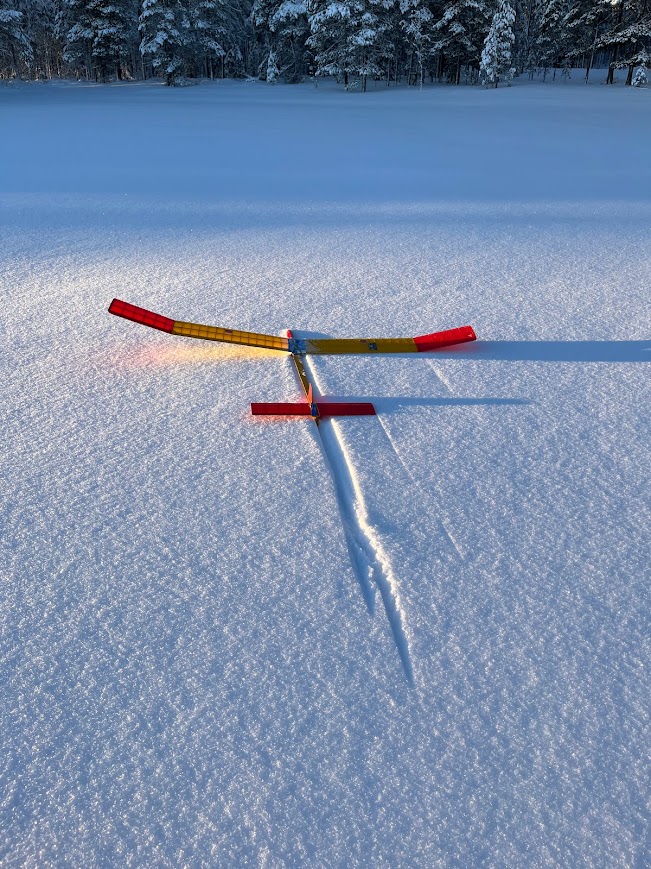
Lakes are also great for gliders and other aeromodelling activities during winter
Air sports in Finland
Hyvönen explains that as well as around 90 official airfields for powered flight, there are several air sport centres for gliding and skydiving, dozens of hang gliding and paragliding locations and numerous aeromodelling and drone sites.
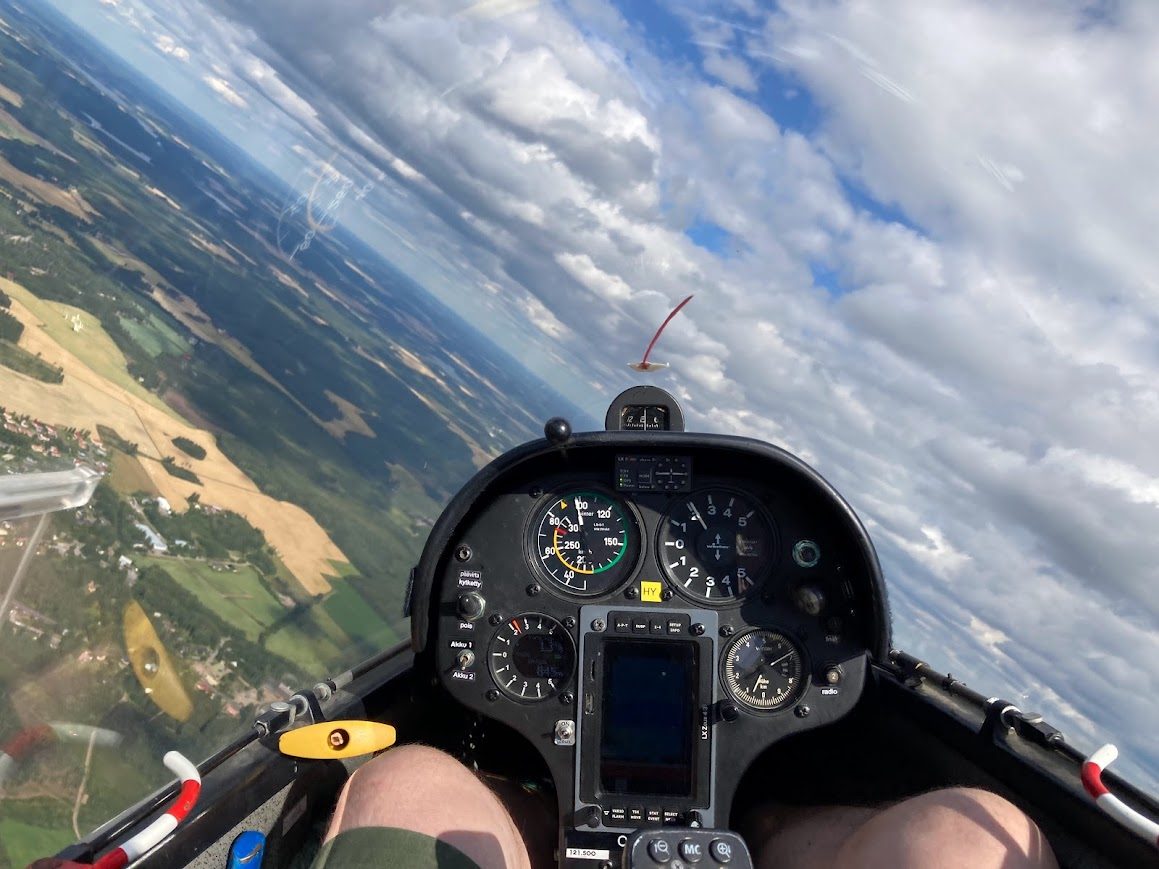
A pilot enjoying the free airspace!
Seaplanes are a huge feature of Finnish aviation life, with approximately 188,000 lakes all waiting to be explored from the air.
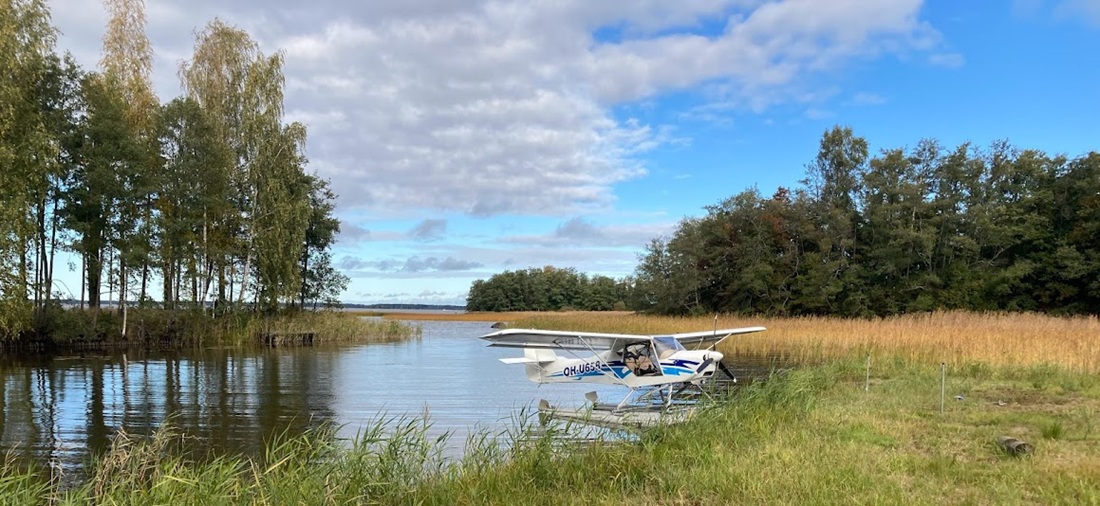
Ultralight seaplanes are popular and common as they offer good value for the cost. [An Apollo Fox, Pori]
Freedom in the skies
Area Control Centre Finland provides air navigation services, but most airfields are uncontrolled so pilots can simply follow ordinary procedures, making it easy and flexible for beginners and experienced aviators alike.
The Finnish state-owned airport operator Finavia owns 20 airports, of which five are active 24 hours a day. The rest are opened for commercial flight arrivals and departures, but outside those opening hours they are free to use as ordinary uncontrolled airfields without landing or parking fees. Other airfields are owned by local communes, private individuals or community associations, but are mostly free or inexpensive to use.
“What a wonderful way to travel around, meet new people, maybe even camp under your wing and go for an evening sauna with local aviators,” Hyvönen says with a smile.
Midnight Sun
In Finland, summer days are long. Very long. In the northern parts of Finland, aviation night never comes, so pilots can fly around the clock. Even in the capital area the official night lasts only one full hour during midsummer days.
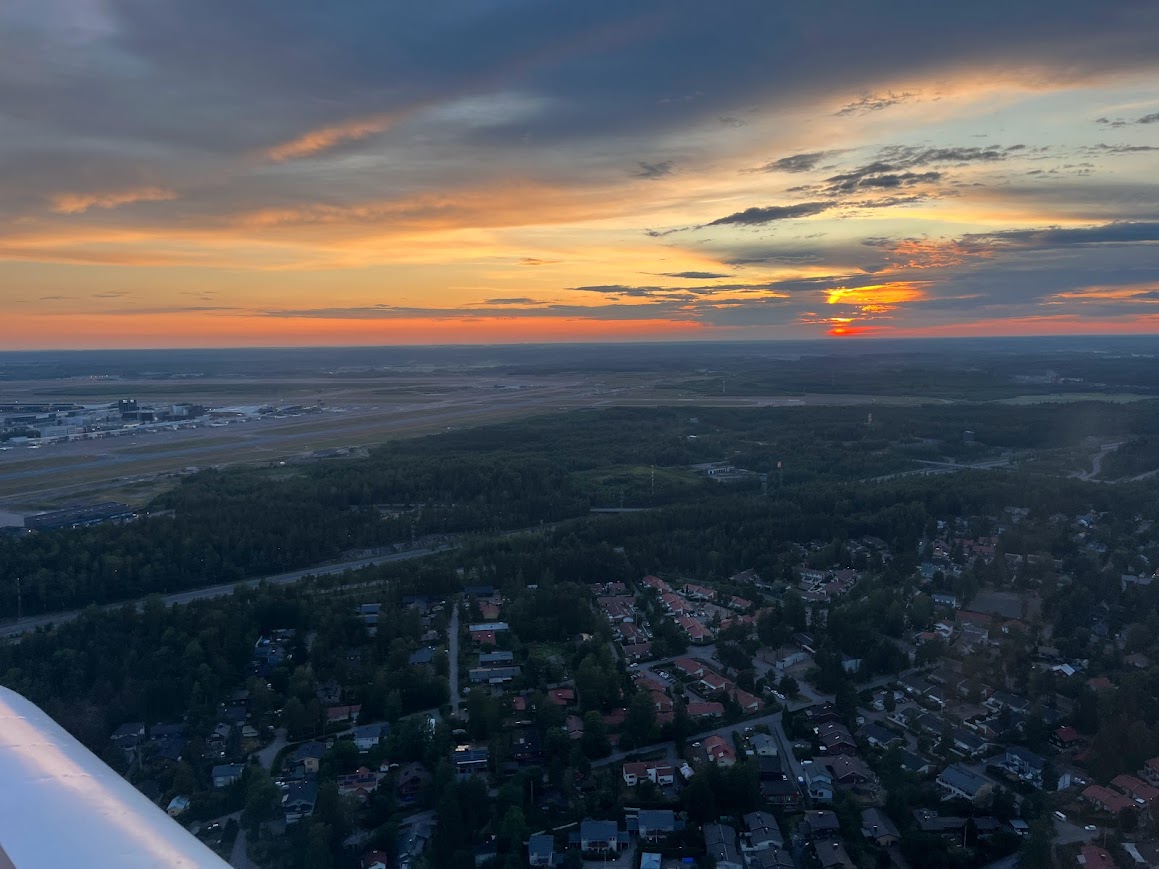
View of the sun setting over Helsinki-Vantaa Airport Finland, 28 June 2023 at 22:36 hrs
On the other hand, during the darkest winter there is daylight only for seven hours and in the north - Nuorgam – the sun goes down on 25 November and rises again on 17 January! Air sports enthusiasts therefore tend to make the most of their air time during summer months.
Finnish aviation season runs from April to November. The weather is usually mild, warm and easy to forecast, as the weather fronts usually move from west to east (Atlantic to Siberia). Whilst the fronts keep moving, rainy periods are short.
Later in the autumn daytime hours begin to dwindle, but usually weather remains clement and good for flying, with cool and dry conditions. The Finns take this opportunity for night flying training!
Hyvönen reminds us that flying against a glowing autumnal backdrop is a not-to-be-missed experience: “The Ruska is amazing, especially in Lapland. Trees turn yellow and red before their leaves drop. The scenery is unbelievably amazing!”
Flying remains possible during wintertime, with 20 major airports maintained and several smaller airfields besides. And of course, indoor skydiving centres are open all year round!
Summer events
Finland’s vibrant summer months are jam-packed with interesting aviation events.
Flying clubs arrange fly-ins starting in March. One of the earliest is a special occasion at Lake Nummijärvi - if ice is thick enough for landings!
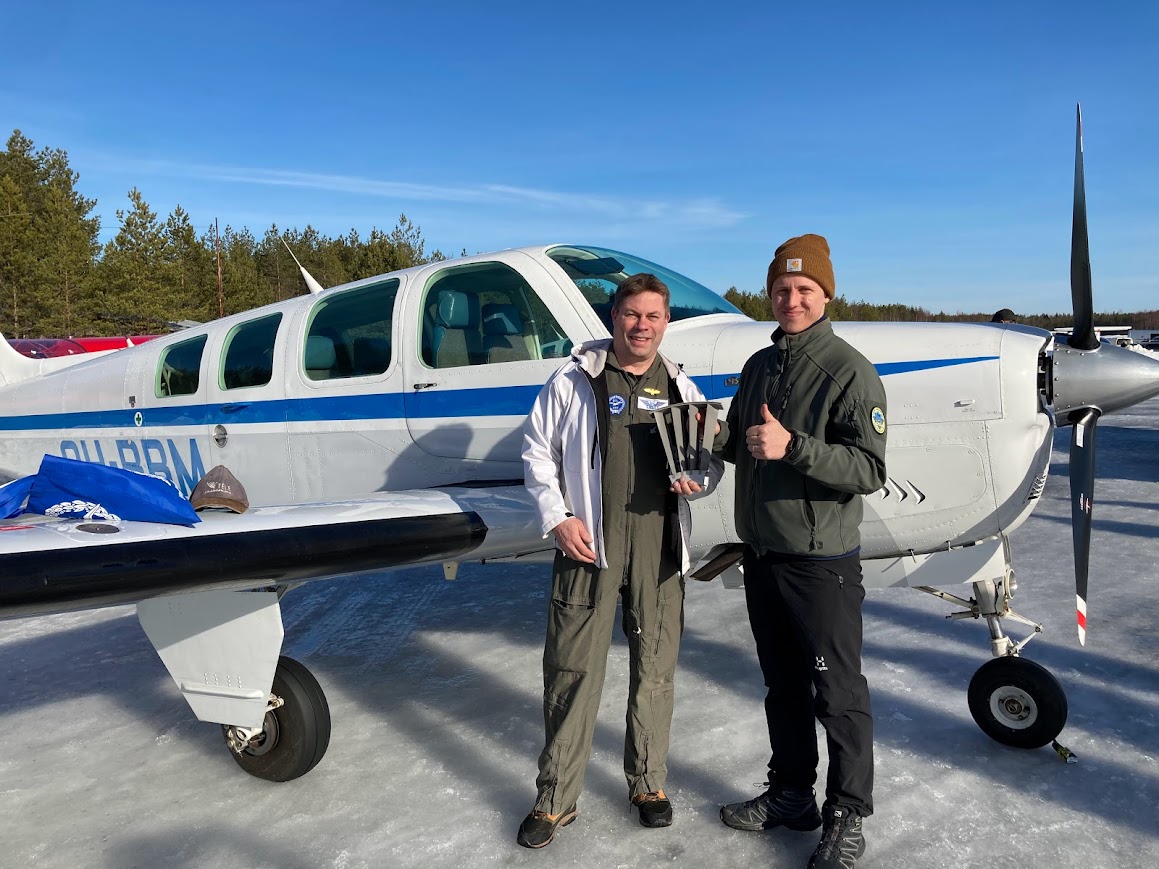
Flying during winter. Vaasa flying club won the annual airfield competition (see below) and here Joakim Waismaa receives the challenge cup award at Nummijärvi Fly In, Kauhajoki, March 2023
The busiest period begins in June and events are plentiful and varied, with some running special themes. Hyvönen explains: “Visitors may see old farming machinery at Kauhajoki in western Finland. Up north at Sodankylä, locals invite everyone to attend Arctic Aviation Day with 24 hour flying. In the Southeast, a special conference for electric aviation is held in Mikkeli.”
The Finnish Aeronautical Association’s main airshow takes place in mid-June, in which air sports of all kinds have their chance to shine and attract new participants. Ground displays of interesting aircraft appeal to all ages, and as visitors turn their eyes to the skies, they witness amazing display flights of military aerobatics groups from around the world.
“We have been lucky to welcome the Patrouille du France, the Frecce Tricolori, the British Red Arrows, US Thunderbirds and of course our native team, the Midnight Hawks, who all show us their best tricks!” enthuses Hyvönen.
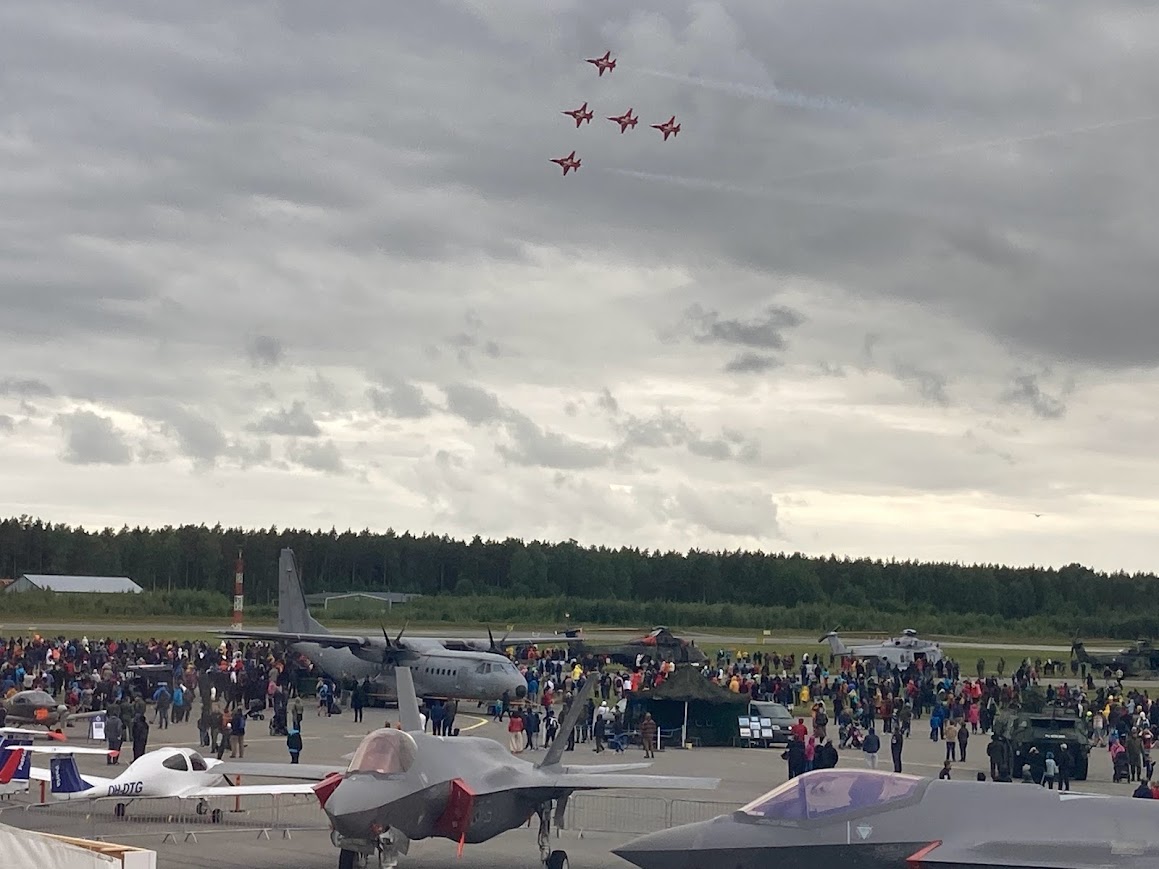
The Finnish Aeronautical Association's annual airshow takes place in different cities around Finland. Here the Patrouille Swiss are flying in Pori, 2022
July is the time for Finnish Experimental Summer Days, a fly-in event, as well as long distance paragliding camps and unmanned practice and competitions. There are several gliding practice camps and competitions too, plus parachuting and skydiving activities.
Competition calendar
Official Finnish championships feature regularly on the aeronautical calendar, with most competitions also open to non-natives as well.
Finnish athletes also compete in aerobatics, several classes of aeromodelling, paragliding and also in ultralight categories, where the Finnish Championships are based on a combination of Air Navigation Race and Landing Accuracy tasks.
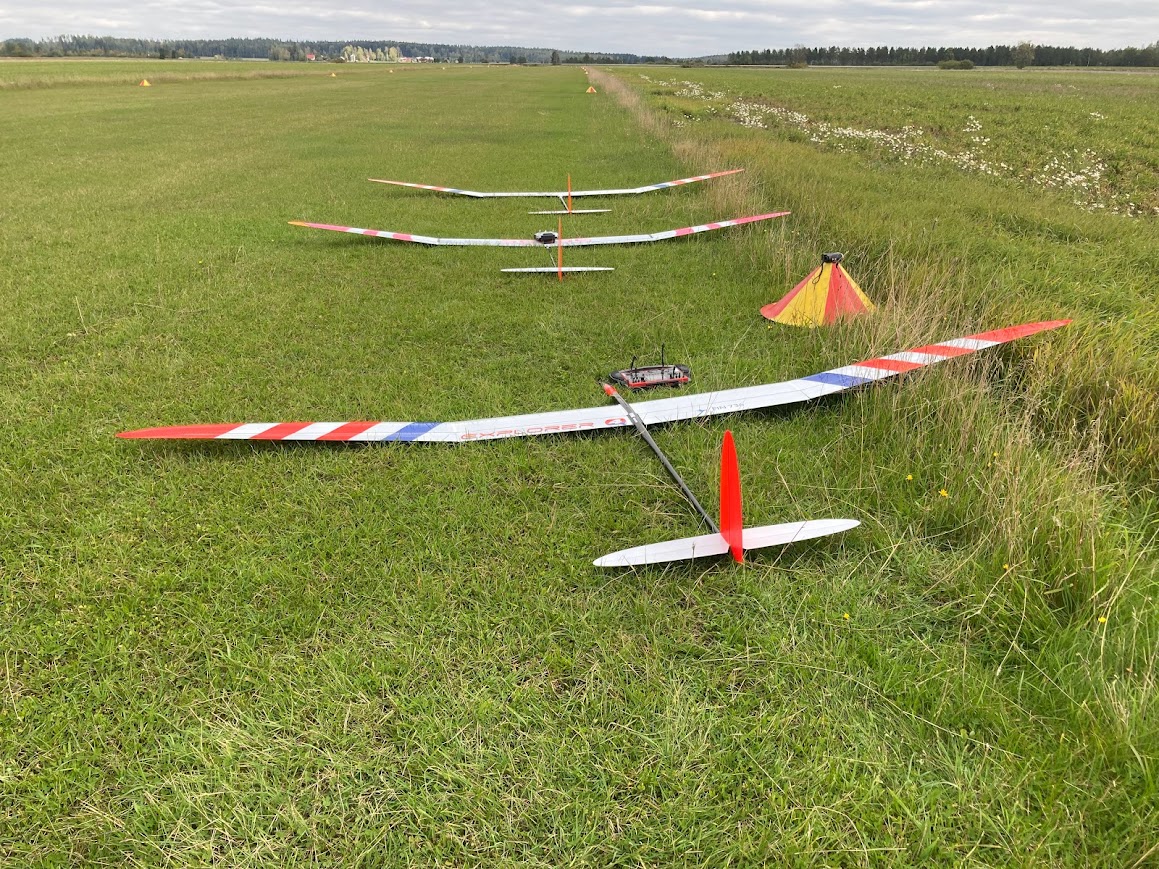
Many airfields are also shared with aeromodelling practice sessions and competitions. "Live and let live!" [Savikko EFNS.]
When it comes to gliding, Hyvönen claims that the locals have an in-joke: “Don’t book your holiday at the beginning of June on the same dates as the Finnish Gliding Championships – the chance of rain is very close to 100%!” He does add that despite the unlucky rainfall during this event, Finland is a great country for gliding due to its open air space and generally very good weather.
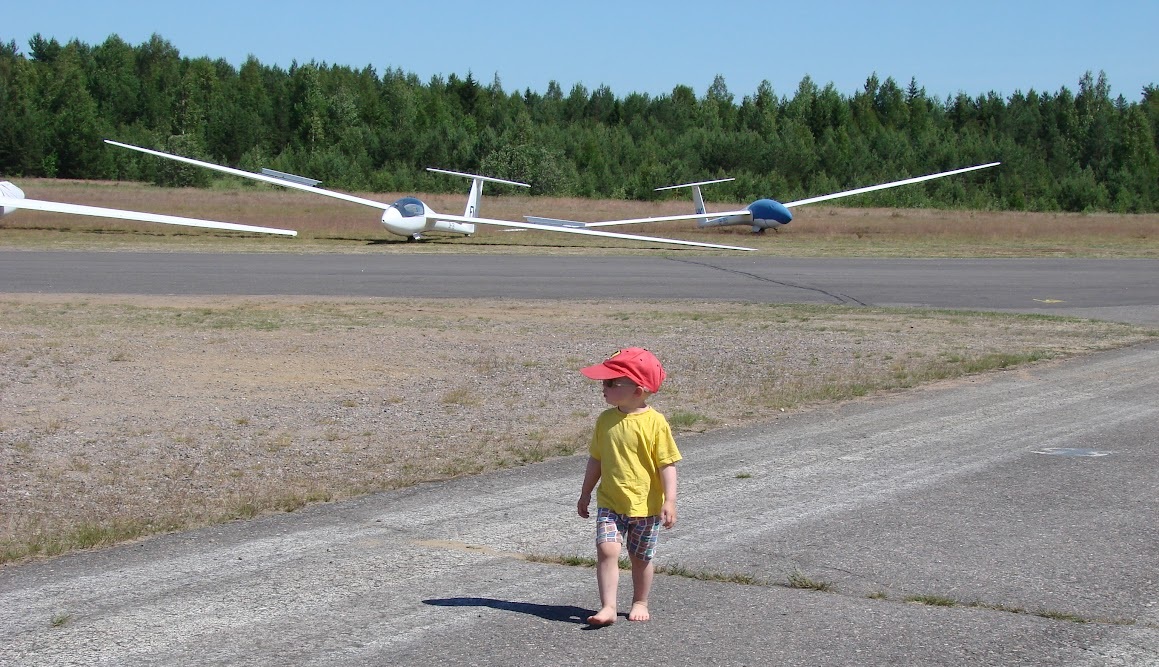
Not yet too hot to go barefoot at the airfield! Aaro Hyvönen checks out potential thermals...
Hyvönen highlights a proud moment in Finnish history: “Back in 1975 German glider pilot Hans Werner Grosse flew his famous first ever FAI 1000 km triangle in Finland flying from Nummela - Kankajärvi - Juuka and returning to Nummela." Click to see FAI record file.
A particularly fun competition in Finland is aimed at fixed wing powered flying - motorised planes, ultralights and touring motorgliders. The aim of the Airfield Competition is to encourage pilots to visit different airfields and meet fellow aviators. Participants gain one point for each new airfield they land at, with 1.5 points if they fly abroad! At the end of the season, certificates are given to those with most points or longest flown distance. Pilots log their flights with their mobile device. How is this regulated, you might wonder? With a twinkle in his eye, Hyvönen explains: “If someone tries to cheat, the judges are allowed to remove their ears from their head. Nobody has tried. Yet.”
In 1976 the FAI World Gliding Championships were held in Räyskälä Airfield, in Loppi, Finland
flying in finland: useful links
FAI General Conference 2025
Images kindly supplied by Timo Hyvönen

